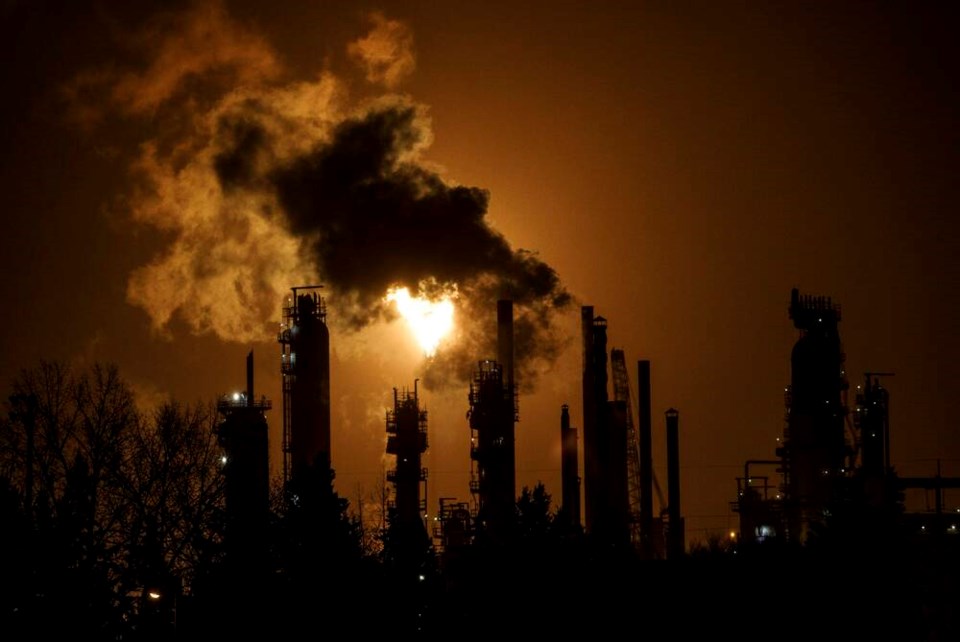We’ve been hearing a lot of promises about the climate lately. With COP26, the UN’s climate-change conference, underway in Glasgow, Scotland, until Nov. 12, governments and corporations around the world have been talking big about making big commitments and big inroads on greenhouse-gas emissions to reach net-zero targets by 2050.
Amid local news about which sa国际传媒 residents bore the brunt of last summer’s heat dome, when Lytton’s former residents might begin planning to rebuild their wildfire-ravaged community, how recent marine heat waves temporarily short-circuited the Pacific Ocean’s ability to sequester carbon in its depths, and how once-in-100-year floods and storms are becoming “normal,” our federal government announced that it will impose a hard cap on emissions from the oil and gas sector.
In 2019, sa国际传媒’s oil and gas sector accounted for 191 megatonnes of greenhouse-gas emissions. That’s 26 per cent of the country’s total emissions. Almost half of that amount is produced by the oilsands.
Closer to home, the sa国际传媒 government recently introduced its plan to meet its legislated target to reduce greenhouse-gas emissions by 2030. Initiatives to be employed include increasing the carbon tax, increasing the number of zero-emission passenger vehicles sold, electrifying public transit and ferry fleets, and building up the network of electric-vehicle charging stations across the province.
However, the sa国际传媒 government also remains committed to developing LNG.
Yes, natural gas is cleaner and less carbon-intensive than oilsands and coal. Yes, even if renewable energy sources overtake the world’s energy production in the next three decades, some use of fossil fuels will still be needed.
But, as LNG opponents have said for years, the new fossil-fuel projects being developed in northeastern sa国际传媒 will lock in the province’s emissions for many, many decades. They will make the province’s emissions reductions that much harder to achieve.
In order to hold temperatures at levels scientists say are necessary to keep temperature rise to 2°C, experts say the value of fossil-fuel investments must fall to zero by 2050 — that is, no further investments in fossil fuels.
Most oil and gas companies rely on money provided by stockholders, pension corporations, insurance companies, investment firms and governments. Demand among investors for increased environmental, social and governance accountability by corporations is growing. Many investors want to know what oil and gas companies are doing about climate change and, in particular, how these companies’ long-term emissions targets compare with international climate goals.
According to a recent analysis by the Organization for Economic Co-operation and Development and the London School of Economics and Political Science, the oil and gas industry — a major source of greenhouse-gas emissions almost everywhere — is not on track to meet international climate goals.
The researchers analyzed the life-cycle carbon emissions from the world’s top 52 public oil and gas producers, including Canadian companies such as Cenovus, Imperial Oil and Suncor. They found that many of the companies have not set emissions goals or have failed to set clear goals. What’s more, among companies that have set goals, most targets are too shallow or too narrow to have an appreciable effect. Furthermore, despite all the rhetoric at COP26, the UN Environment Program’s 2021 Production Gap Report indicates the world’s governments actually plan, by 2030, to increase production and use of fossil fuels.
The report also tracks how governments are supporting fossil-fuel production through policies, investments and other measures. According to the OECD, Canadian governments subsidized fossil-fuel production by $1.4 billion in 2019.
Other estimates that also include direct transfers made by governments suggest the subsidies actually equal more than $4.8 billion annually, mostly for production. Since 2016, Export Development sa国际传媒 alone has provided an annual average of over $13 billion in public funds for fossil fuels.
The organization Oil Change International confirms that government subsidies and investment in the sector remains high. Their latest report shows that sa国际传媒 topped the world’s list for fossil-fuel public funding, at $11 billion per year. Compared with subsidies for oil, gas and coal, we also give less government support to renewable energy development than any other G20 country.
All those promises and commitments at COP26? Poppycock?



